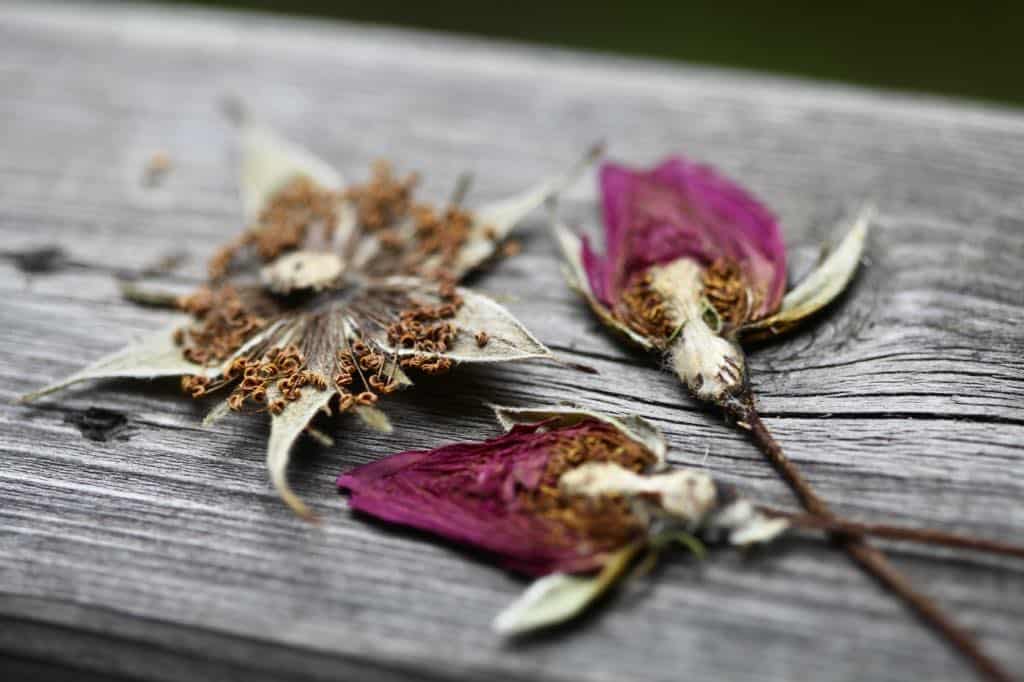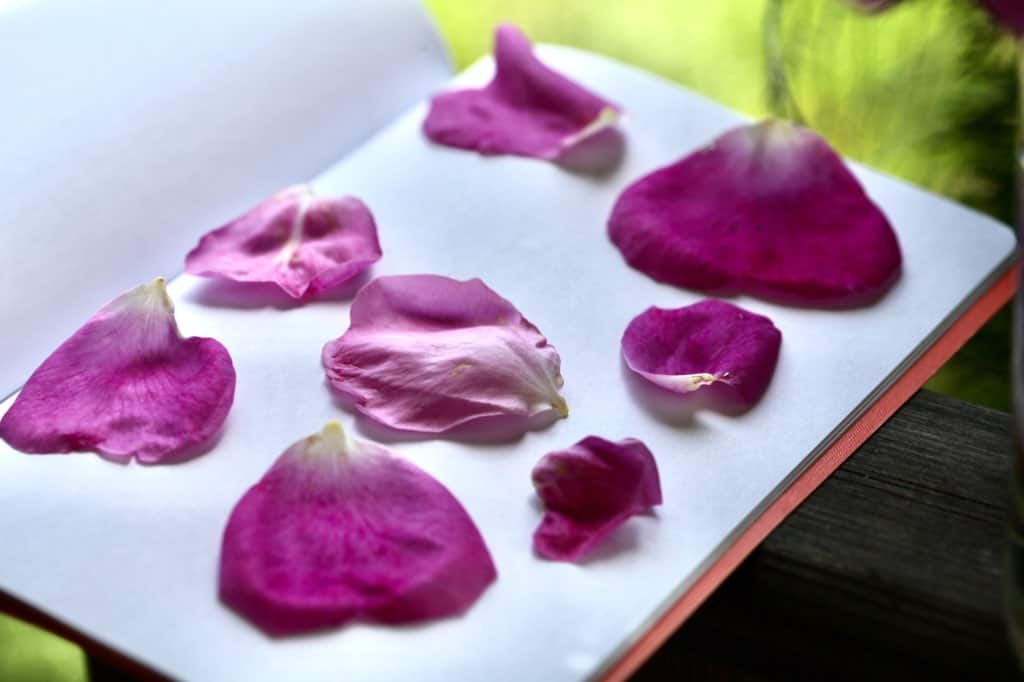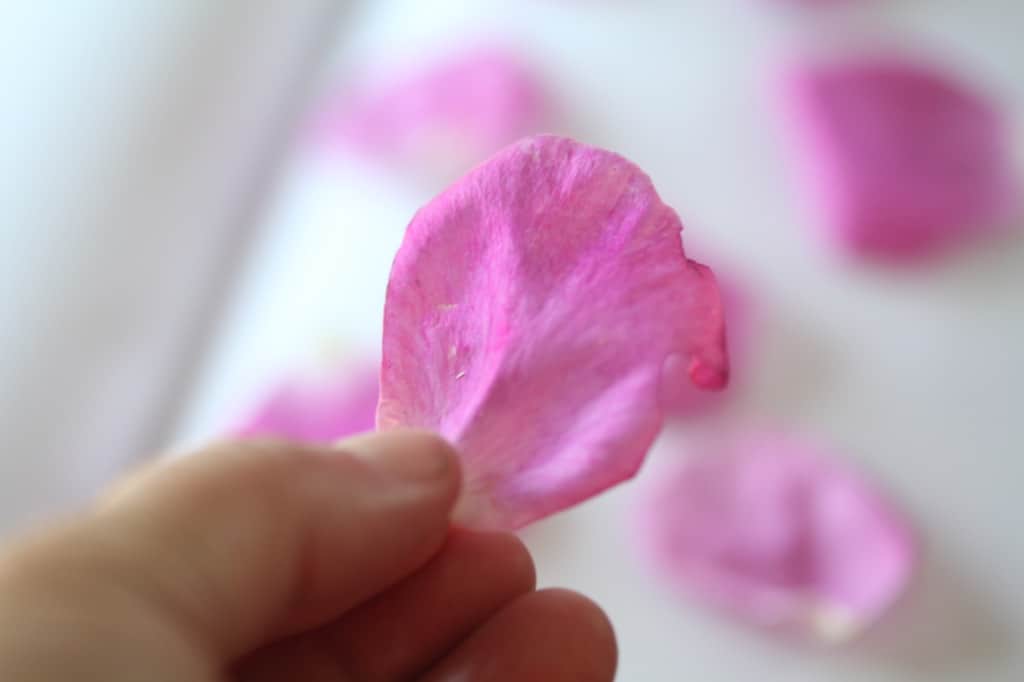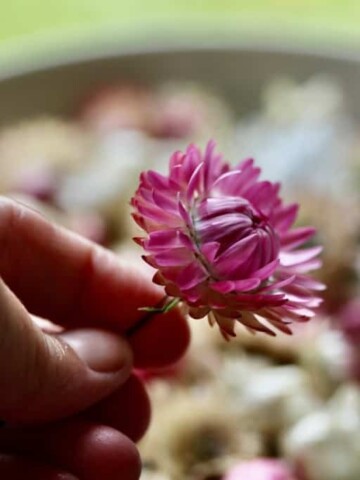Pressing roses is a fairly easy project which will allow you to preserve those special blooms from the garden, or from special occasions. There are a number of different methods which can be used to press your roses. Learn how to press roses, and preserve your beautiful blooms to use and display as everlastings.

Pressing roses is just one of the ways to dry these flowers. This drying process creates flat flowers, which are easy to use in many craft projects.
Pressed flowers have a unique look all of their own, and highlight the details of the blooms.
Beautiful roses can also be dried whole, by hanging or just setting aside on some paper towel or Kraft paper for several weeks.
However drying roses by pressing gives a whole new look to the flowers. The flowers become preserved in the flattened state, and the lines and contours of the plants are emphasized and enhanced.
Pressing roses helps to preserve their romantic beauty. It also enables you to use these pressed blooms more readily, in different DIY projects, and to easily display them as keepsakes.

Can You Press Roses?
Yes, you can definitely press roses using the right techniques.
Roses can be pressed whole, depending on the size of the blooms. The flowers can also be taken down to the individual petals, and the petals themselves can be pressed.
Thicker flowers can be reduced in size by cutting, or through the process of removing unsightly outer petals.
Even tiny rose flower buds can be pressed, although I usually cut these in half with a sharp knife before pressing.

You can remove the stems from the flower heads, or keep them intact.
For best results, roses should be freshly harvested and conditioned, and in their best form for pressing. Using flowers in their best possible condition will produce the best pressed results.
You can still press roses that are several days post harvest, however it is important that the blooms have been in water and remain hydrated.
Roses that have been partially dried, or out of water will not press well. Using fresh flowers for drying is best.
With that being said, you can also press other parts of the flower for interesting pressed specimens.
For example, if the rose is old, and the petals fall off, all is not lost. Try pressing the flower petals and flower bracts separately for a different pressed look.


It's also important to know however that not all roses are equal in their pressing ability. Some varieties will hold their color much longer in the pressed state, while others will fade and turn brown.
Even so, the faded flowers can beautiful, and add to the nostalgia of the pressed blooms.
Methods Of Pressing Roses
There are a number of different ways to press roses, so let's have a look at some popular preservation methods.

Pressing Roses In A Book
One of the most traditional, romantic, and easiest ways for pressing roses is to place the flowers between the pages of a large book.

- To use this simple technique, place the flowers in the book face down, between sheets of paper that can be added to protect your book, and close the pages of the book.
- Keep the individual flowers well spaced, to prevent them from touching.
- The book creates pressure from both sides of the flower when pressed flat.
- Add extra weight to the book by piling other heavy books or a heavy object on top of the book during the pressing process.
- You can also place the book on a book shelf with books on either side which will help to compress the book, and the flowers that it holds.
- The paper pages also help with the drying process, as they act to wick away moisture from the flowers.

Protect Your Book
It's important to know that the roses can cause damage to the book's pages, with the moisture and dyes from the blooms.
So make sure to avoid using a cherished book which you want to stay intact, to avoid damage from the pressing process.
Placing the roses between pieces of paper, and then placing them in the book, will help to protect the book pages to some degree.
Try to avoid using parchment or wax paper, as these papers do not allow the blooms to dry as readily, which is important in the pressing process. The flowers may become moldy if they don't dry properly.

Avoid paper towels as well, because there is often patterns on the paper which can be transferred to the pressed blooms.
Consider using an old book for pressing, and one that you don't mind having some reminders of the pressing process on it's pages.
An old catalog or phone book also works well, as these are large books, and generally destined for the recycling anyway.
Roses pressed in a book will take about 30 days to dry completely. At this point you should have dry flowers which are pressed and paper thin.

Pressing Roses With A Flower Press
Using a wooden flower press is another method of pressing, and probably the most common method for pressing flowers.
Pressing roses with a flower press is one of my favorite ways to press these beautiful blooms.

There are a number of different types of flower presses available. You can purchase your flower press, or you can also create a diy flower press yourself using pieces of wood and some simple hardware.
Similar to pressing with a book, the flower press puts pressure on both sides of the blooms. This helps to squeeze the flowers flat, and dries them at the same time.

- The flowers are sandwiched between sheets of absorbent paper, and then pieces of cardboard, inside the flower press.
- Place flowers face down on the wooden press, between the sandwiched papers, and make sure that they are not touching.
- Place the wooden pieces of the press together, and put the bolts through the drill holes of the press.
- Turning the wing nuts on the bolts to the tightest position will help to compress the flowers.
- The paper on either side of the flowers will help to wick away the moisture of the blooms.
- It will take up to 30 days for the pressing process to be complete.

Pressing Roses In The Microwave
Microwave presses specifically designed for pressing flowers will speed up the pressing process for your roses.
This method of pressing definitely takes a bit of patience, and has a learning curve, and therefore is not as simple to do as the other two methods.
However the process is faster, and you will have dried and pressed roses well before the one month mark.

Drying In A Microwave Press
- To dry with a microwave flower press, place the roses inside the specially designed press which has 2 sheets of cotton fabric sandwiched between 2 absorbent pads.
- These materials will help to wick away moisture from the flowers when they are microwaved.

- There are 4 clamps on the press, which will pull the sides together when in place, squeezing the flowers flat.
- Place the rose filled press inside the microwave.
- The microwave is used in short bursts of 10 to 15 seconds, with cooling times in between, to remove the moisture from the blooms.
- I start with an initial 20 seconds, then let cool. Thereafter I use 10 second bursts, and cool in between, until the flowers are dried.

- The fabric in the microwave press becomes very moist and also stained through the drying process. This is normal, and shows evidence that the moisture is being removed from the flowers.

- As you continue the microwaving process, you will notice that the fabric becomes less moist with each pressing cycle.
- Once the microwave pressing is complete, allow the flowers to cool and dry before removing them from the fabric.
For my roses, I microwaved them 4 times, once for 20 seconds, and 3 times for 10 seconds.
Removing The Flowers From The Press
- If any flowers are stuck to the material, you can gently stretch the fabric under the flowers, which will help to release the dried blooms.
- There may still be extra drying time required after using the microwave press, however the roses will be dried long before the 30 days using the other methods of pressing.
- Just place them inside a flower press or a book, to press them further while they completely dry out over the next few days.

Storing Pressed Roses
Store the pressed roses in a dark dry place for longest storage life.
Keep out of direct sunlight to prevent the colors from fading.
Consider placing the dried flowers between pieces of tissue paper placed inside an old phone book. Placing the pressed flowers inside an airtight container will also work well.
The dried flowers are fairly fragile, and therefore should be handled with care. Using reverse action tweezers will make handling much easier, and can help to keep the blooms from breaking or tearing.

Frequently Asked Questions
Is It Better To Press Or Dry A Rose?
Pressing a rose is just one method of drying. Roses can also be dried whole and intact, without pressing.
Each method has it's own application and really depends on your own preference.
One of the benefits of pressing is the flatness of the flowers, and ease of use for display purposes. The flowers can easily be pressed between glass, as well as applied to floral art.

Can I Press A Rose To Keep It Forever?
Pressing a rose will help to preserve it by removing moisture from the flower.
Pressed roses will likely not last forever, however they can last for years if protected.
Dried flowers need to be protected from moisture, and therefore storing the blooms in the right way is important.
Store in an airtight container in a dry location for best results.

Do You Dry Roses Before Pressing Them?
Roses should be pressed when they are in their freshest state, so the end result will be longer lasting.
If you attempt to press roses that are already dry they will crumble.
For best results for pressing, use roses which have not yet begun to dry.

Conclusion
Pressing roses is a great way to dry romantic blooms from that special occasion, therefore preserving those special momentos.

Choose your favorite method for pressing, or experiment with all the different types.
Roses that are pressed flat are often easier to use for displaying in picture frames, on paper projects, and also in flower art.
The pressing process creates beautiful lines and etchings on the flattened flower, therefore highlighting the beauty of the flowers.
Consider pressing some roses this season, to preserve their elegance and beauty.

Have you ever pressed roses? Be sure to leave a comment below to share your experience!
Other Posts You May Like:
PIN IT FOR LATER!










Leave a Reply